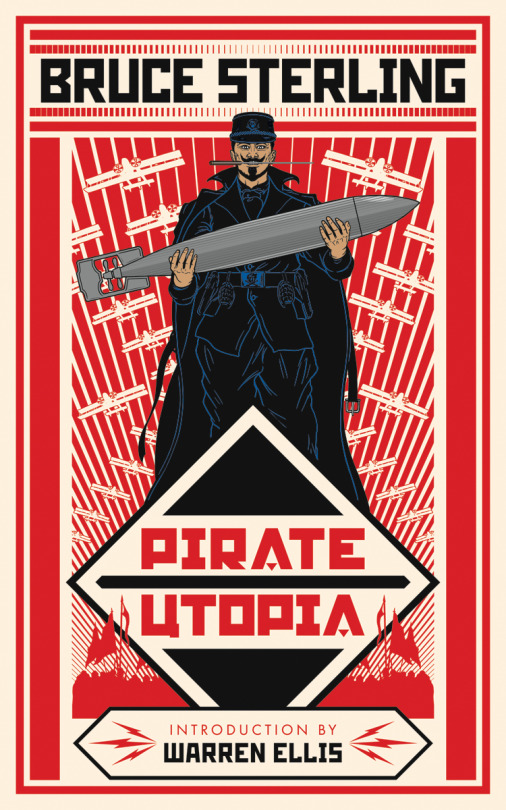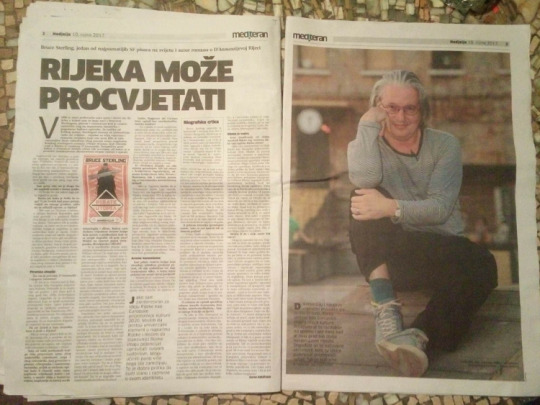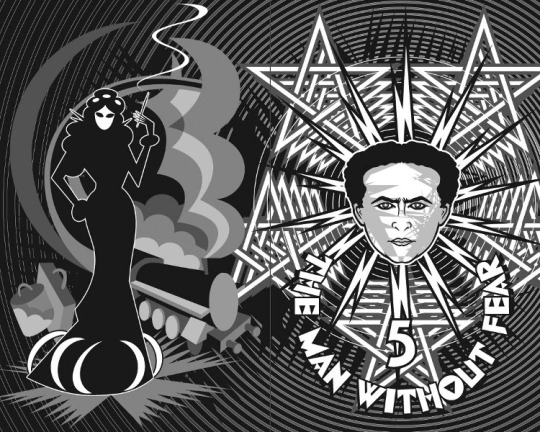Bruce Sterling’s PIRATE UTOPIA offers insight into the increasingly influential cities of the twenty-first century

In THE HEDGEHOG REVIEW: VOL. 19 NO. 2 (SUMMER 2017), Noah J. Toly discusses Bruce Sterling’s Sidewise Award-nominated PIRATE UTOPIA.
To West, the very power struggles of Europe in the first half of the twentieth century were etched into the cityscape of Fiume.
The same Fiume—kind of—is the setting for Bruce Sterling’s 2016 science-fiction novel Pirate Utopia, which presents an alternative history of the city. Sterling’s Fiume is the titular pirate utopia, a city in which “an entire Babel of languages” is spoken by those who converge upon it from all over the world. Fiume’s leaders are captivated by Futurism, “united in defiance of the Church and the State,” and convinced by the power of industry and engineering to “defy the whole world from a modest Adriatic town.”17 They dream of writing into being a future uninhibited by the nation-state and the League of Nations. As the story unfolds, it becomes clear that Fiume’s technologies, and its drive for independence, are being directed toward the familiar ends of profiteering and power for power’s sake. In the end, the pirate regime gets its chance to turn against the nation-state in its preeminent form when its leaders are invited by a coterie of famous Americans, including Harry Houdini, H.P. Lovecraft, and Robert E. Howard, to join in a military coup to overthrow US president Woodrow Wilson.

The increasingly influential cities of the twenty-first century are, in some ways, like Sterling’s Fiume. In the wake of World War I, with Italy “half-graveyard, half-clearing-sale,” the fictional Fiume had accumulated machinery that had been heaped up and then abandoned by the nation-state: “Armored flame-throwers. Pneumatic drills for mountain warfare. Great spidery heaps of disused radio antennas. So many awesome and efficient things that a stricken world had bent every possible effort to build, and then forgotten.”18 These machines, coupled with the giant flying pontoon boats and flying torpedoes produced at a local factory, endowed the city with a distinct blend of inherited capabilities and novel techniques that were turned not to transformational purposes but to more familiar ends.

Zoran Krušvar for the Croatian NOVI LIST interviews Bruce Sterling.
First of all, I’m very glad you wrote a novel about my town.
– Oh, thank you for letting me out of town afterwards.
Tell me, how did this happen? You are the man who travels a lot, you have seen many cities, why did you decide exactly for Rijeka?
“I was at Tito’s Galeb, as part of the Festival Republic, where we talked about the history of Rijeka. This book is in some way the result of this gathering. I probably would have written it anyway, but there everything was crystallized there.
The book is successful, I’m happy how it went off. So we can have other such gatherings and I believe that some similar fruits will be produced from them. Otherwise, I often pass through Rijeka, halfway between the cities I live in, Turin and Belgrade, and I can also stay in Krk, where I’m writing, so it was not particularly unlikely to write something about Rijeka. However, most of this novel about Rijeka I wrote in Turin.

Pirate Utopia
What attracted you D’Annunzio and his time?
– That is the time when Rijeka was truly the European Capital of Culture. There was a period of one and a half days when this town was an incredible place. There have been unheard of activities that have had the potential to change the world. Such cultural eruptions are rare, we can compare it with San Fancis in 1967, the Paris Commune, Five Million Days, or some other form of overthrow. These are dramatic events and of course I’m interested.
If you lived in that moment, would you come to Rijeka?
"There were a lot of writers who came, probably I would have visited it, but since I’m not a big supporter of political movements I would probably have written a sneaky comment and gone.
Translation from Croatian courtesy of Google.
For more info on PIRATE UTOPIA, visit the Tachyon page.
Cover and image by John Coulthart
